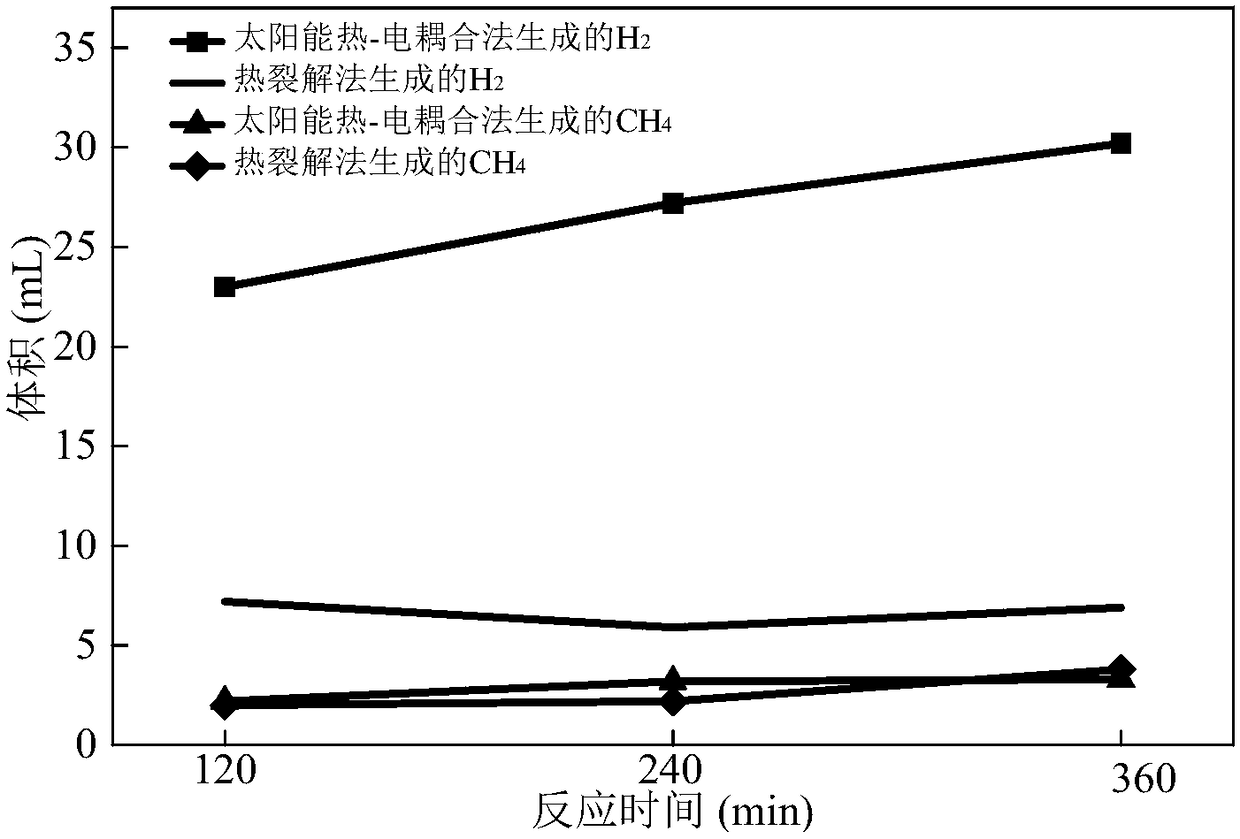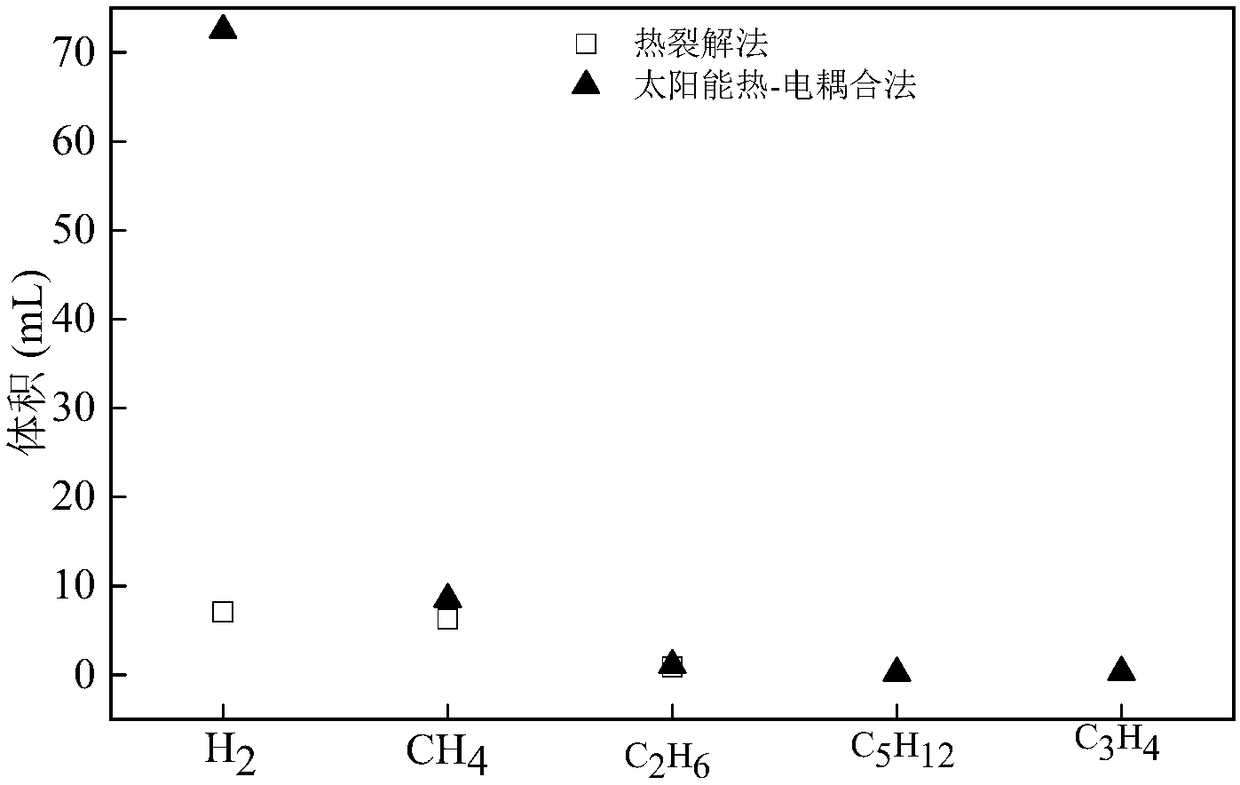Method for degrading polypropylene to efficiently produce hydrogen and light dydrocarbon through solar heat-electrical coupling
A solar thermal and polypropylene technology, applied in solar thermal power generation, solar thermal energy, solar thermal collectors, etc., can solve the problems of high cost and low usable value of products
- Summary
- Abstract
- Description
- Claims
- Application Information
AI Technical Summary
Problems solved by technology
Method used
Image
Examples
Embodiment 1
[0079] (1) Preparation of the spiral electrode. A spiral electrode with a diameter of 1cm is made by winding a nickel wire with a diameter of 0.8mm, the number of winding turns is 10, the total length of the nickel wire is 26cm, and the external area is πdl=π×0.08cm×26cm=6.53cm 2 .
[0080] (2) Preparation of PP / KOH / NaOH mixed system. Dry polypropylene (type T30s) at 100°C for 5 minutes in an oven. Use an electronic balance to multiply 2.800g KOH, 0.5g polypropylene particles and 2.000g NaOH respectively. Put the weighed medicines into the corundum crucible in turn, so that the three are mixed evenly.
[0081] (3) Seal and heat the reaction system. Insert the anode electrode and the cathode electrode into the material of the corundum crucible, and keep a distance of 1 cm between the two electrodes. The reactor is sealed with graphite packing, and the reactor is fastened with bolts and nuts. Connect the condensing device, drying device and gas collection device separately...
Embodiment 2
[0085] Embodiment 2 is basically the same as Embodiment 1, the difference is:
[0086] In step (2), the dosage of polypropylene is 2g;
[0087] In step (3), the preset temperature is set to 400°C;
[0088] In step (5), the time of electrolysis reaction is 60min.
PUM
 Login to View More
Login to View More Abstract
Description
Claims
Application Information
 Login to View More
Login to View More - R&D
- Intellectual Property
- Life Sciences
- Materials
- Tech Scout
- Unparalleled Data Quality
- Higher Quality Content
- 60% Fewer Hallucinations
Browse by: Latest US Patents, China's latest patents, Technical Efficacy Thesaurus, Application Domain, Technology Topic, Popular Technical Reports.
© 2025 PatSnap. All rights reserved.Legal|Privacy policy|Modern Slavery Act Transparency Statement|Sitemap|About US| Contact US: help@patsnap.com



